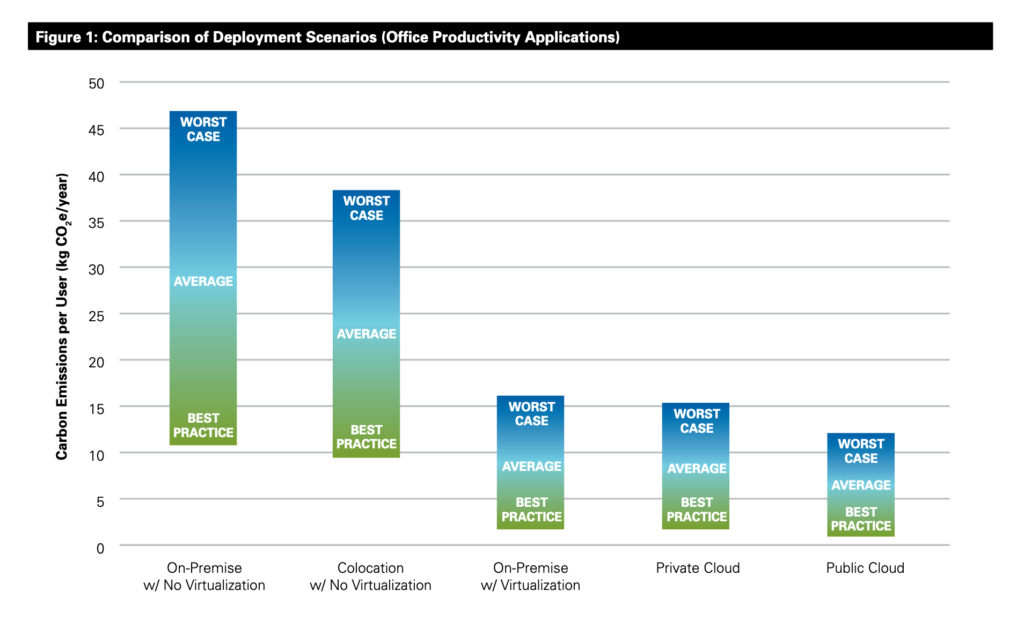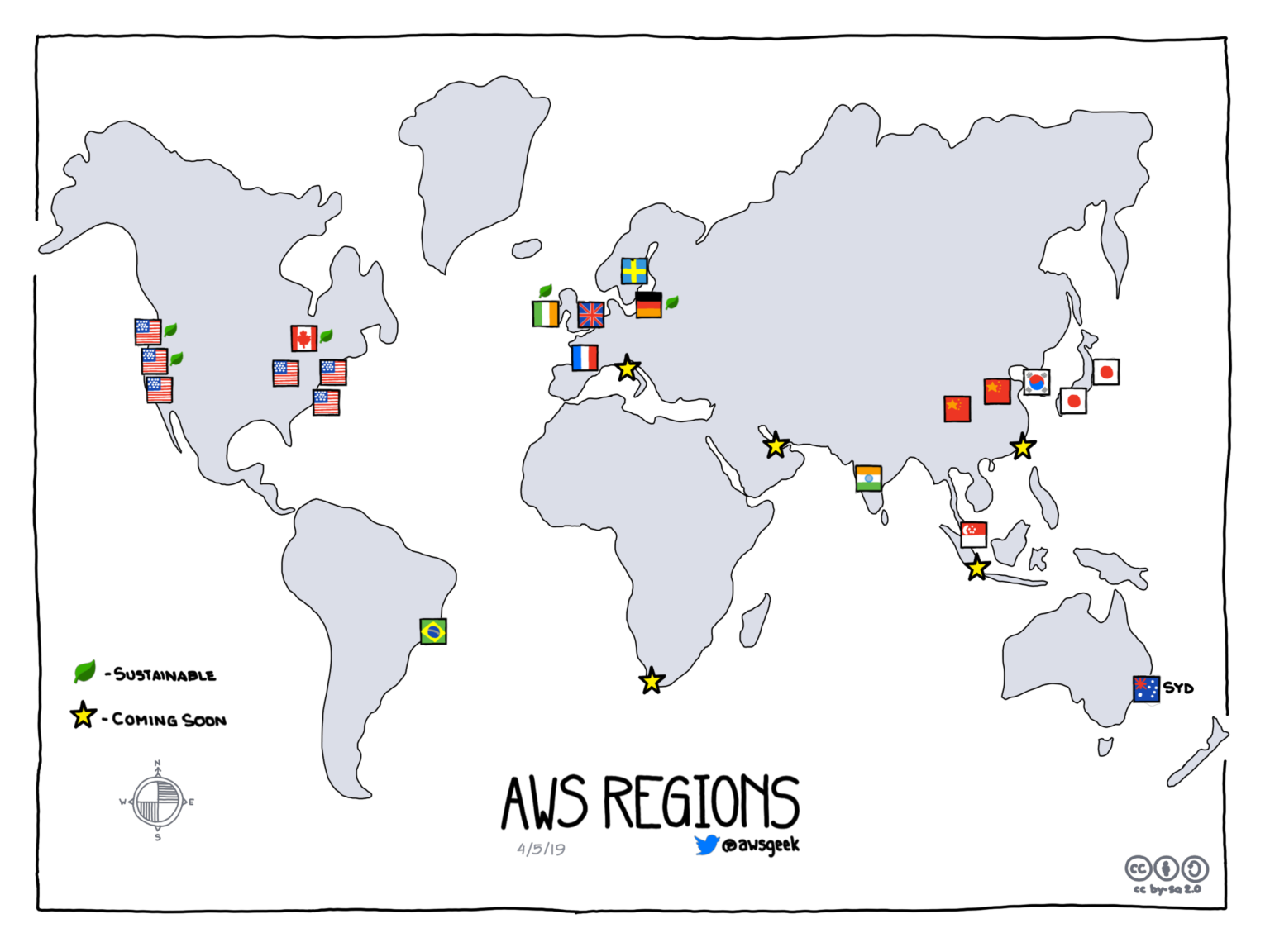
I wish I could tell you that I have always been an environmental warrior.
But my story is a more common one. I’ve always done my best to care for the environment. I cycle, walk or take public transport as much as I can. I use my refillable water bottle and tote bags to avoid waste.
That’s not too bad, right? So I thought, until I read the 2018 special report by the Intergovernmental Panel on Climate Change (IPCC). It is evident that we need bolder, more urgent actions.
“There are no gray areas when it comes to survival. Either we go on as a civilization or we don’t. We have to change.”
– Greta Thunberg on the TED stage
As I began to make more changes in my personal life to reduce my carbon footprint, I became curious to figure out the environmental impact of my work as well. I have worked at Buffer – a fully remote company – for four years. I have always assumed that a remote company must have a lower carbon footprint, but is that true?
Calculating our impact in 4 key areas
In this post, I’ll do my best to calculate our remote company’s carbon footprint versus a co-located company, analyzing categories including daily commute, office space, data storage, work travel, and more.
Daily commute
Environmentally speaking, one of the biggest benefits of remote work is that you don’t need to commute to the office anymore.
The average American commutes to work by car just under one hour each day – roughly 32 miles, which equates to about 3.2 tonnes of CO2 per person every year.
The daily commute to and from work accounts for more than 98% of an employee’s work-related carbon footprint. Having the choice not to commute feels like a great way to cut our carbon footprint.
Based on our State of Remote Work 2020 report, 80% of remote workers use their home as their primary place of work. That means that 80% of remote workers who would have needed to commute can now walk from their bedroom to their desk (or work from their bed, though we don’t recommend it)!
For others who prefer working from coworking spaces or cafés, it’s likely that they would work from closer spots which might be accessible by walking, cycling or public transportation.
Advantage: Remote work
Office space
How about the fact that Buffer doesn’t have a physical office at all? Does that reduce our overall impact on the environment?
Based on the business calculator from Carbon Footprint, office space for 90 people in California, U.S. would generate roughly 234 tons of carbon dioxide equivalent (also known as CO2e, a standard unit for measuring carbon footprints), per year – 2.6 tons per Buffer teammate!
For reference, the annual CO2 emissions for home energy usage per person in an average household (of three people in California) is around 1.39 tons.
For someone who works from home, I expect that my energy usage would be higher than average because I spend more time there. Although I can’t find specific data on how much the increase would be, we could infer that it would be much lower than the 2.6 tons I would otherwise generate by working in an office.
As a side note, the “buildings and buildings construction” sectors combined are responsible for 36% of global final energy consumption and nearly 40% of total direct and indirect CO2 emissions. As more people work in home offices, that should decrease the demand for office buildings to accommodate for the increase of population across the world.
Advantage: Remote work
Data center energy
There are other aspects of running an office that are tougher to calculate, such as the energy consumed by what an organization produces and how. Since Buffer is a software-as-a-service company, our major energy expenditure is storing the large amount of data needed to power our tools.
All the data centers in the US are estimated to consume more than 90 billion kilowatt-hours of electricity annually – roughly 3 percent of America’s total electrical energy use (and growing).
Companies can either house all their functions on their own server that they purchase and have on-site, or move their data to a cloud service. A cloud service is a way to rent server space, rather than own the server, and access it via the internet.
Since they’re not physically located, remote companies are most likely to use the cloud, which is generally more energy efficient and has a smaller carbon footprint than on-premise servers.
 Source: NRDC
Source: NRDC
With the cloud, companies typically use less than ¼ of the servers than they would on-premises – a major energy reduction!
But not all clouds are created equal – some are greener than others.
Buffer uses AWS, which has set a target for 80% sustainable servers by 2024 and 100% by 2030. (By comparison, Google has already achieved this goal.) We could do more here by asking AWS for more renewable hosting and moving our server environments to sustainable, carbon neutral regions where possible, like those noted here:

It’s difficult to estimate exact numbers for this section, but according to this organization, cloud server using non-green electricity would be 0.5 tons of CO2e / year and server, and an on-premise or data center-server using non-green electricity would be 1 ton of CO2e / year and server.
Advantage: Remote work
Work travel
As a remote company, Buffer has one company-wide retreat plus an additional “onsite” for each area per year. These are irreplaceable moments for remote teams to meet in person and build the connections that no amount of video calls or Slack threads could replace.
With teammates around the world, no matter how much we try to optimize the retreat locations, most teammates need to fly each time we meet. Unfortunately, air travel has a greater environmental impact compared to other modes of transportation.
Using the distance between the home of each Buffer teammate and the last two retreat locations (San Diego and Singapore), I calculated each teammate’s amount of emission using the flight carbon footprint calculator and then doubled it (to represent the two trips per year). Based on this calculation, the average emission per Buffer teammate would be around 4.9 tons CO2 for our travel each year.
This calculation does not include other types of business travels, like conferences and client meetings, based on the assumption that similar non-remote companies also travel as much for those occasions.
This is a big hit when it comes to our company’s carbon footprint. But meeting teammates in person at least once a year is invaluable to remote companies. Hopefully, as virtual reality continues to improve, that could be another fun and environmentally responsible way for remote teams to connect in the future!
Advantage: Co-located work
The grand total: Remote work appears better for the environment
Overall, when we look at the three major categories we can compare with some accuracy using data, it appears that our remote company has a smaller carbon footprint than a co-located company, at 4.9 tons of CO2e per person per year versus 5.8.Daily commute(tons of CO2 per person per year)Office space(tons of CO2e per person per year)Company travels(tons of CO2e per person per year)Data center energy (tons of CO2 per server per year)Buffer––4.90.5Co-located office3.22.6–1
Remote companies with less air travel would see an even greater difference compared to co-located work!
The benefits flexibility offers can’t be measured
While these numbers are undoubtedly useful, they don’t tell the full story. There are many crucial aspect of remote working that are difficult to measure, but impactful nonetheless.
Since I joined Buffer four years ago, the flexibility of remote work has freed me to make a lot of positive changes in my life, including ones that align with my values to care for the environment.
I have been able to choose an energy supplier that offers 100% renewable energy for my home office, and I can also pick my coworking space based on their commitment to minimize their carbon footprint.
By working from home, I can cook more instead of eating out – this makes it much easier for me to eat vegan meals and choose seasonal, local produce – not to mention ditching the packaging that would come from takeaway food.
Since I am spending much more time at home, it makes sense for me to invest in a flat that is well-insulated and energy efficient. I even have the flexibility to wash clothes at a more optimal time during the day to lower the burden of the grid to ensure more renewable energy is in the mix.
There are many more examples from my teammates who have felt empowered to make more environmental choices due to remote working:
Nicole: “Working remotely has allowed so much more work flexibility so that we were able to expand our backyard homestead from just a few chickens to so much more; including duck and turkey-raising, gardening, home-brewing kombucha, and fermenting and canning fruits and veggies. We’re a lot more self-sufficient when it comes to food and take fewer trips to the store.”Kelly: “Working remotely and not commuting has freed up much more time for cooking meals at home, starting a pollinator garden, and composting. Not commuting also helped me find ways to be less car-dependent and inspired me to sell my car last year!”Joe: “I used to drive 60 minutes a day for my previous job. Since working remotely, I’ve been able to greatly reduce my carbon footprint from not having to commute to work”Arielle: “I’m able to cook most of my meals at home, and pop over to my local grocer to buy fresh veggies more often. I also have more time to garden and grow my own food!”Keisha: “From drastically decreasing my commute to and from work (and out to lunch on several occasions), to the decline in the amount of ‘work clothes’ I’ve purchased, working remotely has improved my life in so many ways!”
The flexibility of remote work empowers individuals to make decisions that are better for their lives and our environment.
Can an individual really make a difference? Yes!
Overall, remote work seems to provide more flexibility and opportunities to reduce our carbon footprint further. That feels incredibly exciting to me.
The climate crisis is an unprecedented challenge for humanity, and its scale can feel overwhelming. But each small change we make is a statement that shows those around us that we care.
One young person can inspire millions. Hundreds of collective shifts could incentivize businesses to adopt more sustainable practices. Thousands of voices can urge governments to commit to a carbon-neutral future.
We cannot underestimate the ripple effect of the individual.
So what can we do as individuals to keep the movement going? Here are some ideas.
Stay informed
Awareness and knowledge are the first steps to positive changes. Fortunately, there is a lot of responsible coverage on climate change coming from major media outlets like The Guardian and The New York Times.
To go deeper, books like There is No Planet B: A Handbook for the Make or Break Years, The Human Planet: How We Created the Anthropocene, and online courses like the Carbon Literacy course can equip us with the facts, language and practical steps to take action.
Reduce what you can measure
As I was researching this post, I realized first-hand how tricky it can be to measure our impact. I came across quite a few great tools for both individuals and companies to calculate their carbon footprints:
TerraPass (U.S.) offers carbon footprint calculators for individuals, businesses and event organizers. You can also purchase carbon offsets and renewable energy credits directly via them.Carbon Footprint (U.K.) also offers carbon footprint calculators and carbon offset options for individuals and businesses. Organizations could also sign up to their carbon tracking program and monitor their environmental impact over an extended period.WWF’s environmental footprint calculator is an accessible alternative for individuals as it takes you through a questionnaire about your lifestyle, even if you don’t have the numbers ready, yet.Another way to offset your emissions is via Gold Standard Climate+ projects that also supports local communities with sustainable development benefits like safe drinking water, protecting forests, improving health or creating local jobs.Offset your travel
The most planet-friendly option is to avoid air travel as much as possible, and some great organizations like Climate Perks are working on that.
When air travel is necessary, there are ways to minimize the impact. Flying direct is the most environmentally friendly option, since planes burn the most fuel during takeoff.
Many airlines offer passengers the opportunity to offset their travel emissions via carbon offset programs, which counteract your personal harmful emissions by allowing you to fund projects elsewhere in the world that produce clean energy or reduce carbon emissions in other ways.
On top of these, airlines that fly internationally are starting to voluntarily offset most of the growth in their carbon dioxide emissions under a UN agreement, which is a positive step.
If you have a hefty daily commute in a car, you can consider offsetting that as well!
Share your advocacy
Are you or your company committed to reduce greenhouse gas emissions and take actions in line with the global targets? If so, do tell! It’s not about bragging – it’s about raising awareness and tackling this greatest challenge together.
I know that I am not even close to my personal goal yet – 2 tons CO2e per person per year by 2050. Nevertheless, by being transparent about the fact that I’m trying, I hold myself accountable publicly.
I’ve also found a fantastic community of people who are also doing their best – check out the Sustainable Web Manifesto and ClimateAction.tech if you work in tech.
Your voice matters. Join a community or start one. Take a friend or colleague with you while you’re at it.
Don’t forget to take care of yourself
If you’re starting to feel overwhelmed at this point, you are not alone. Many of us experience eco-anxiety, and that could cause the feeling of hopelessness, apathy or even denial.
The climate crisis requires urgent action, yet it is also a marathon rather than a sprint. Having compassion for yourself and others is the key to transform despair into the energy for action. This long-form article by Kaira Jewel Lingo has helped me to befriend my eco-anxiety and find renewed motivations to take meaningful actions.
Over to you!
Every individual and organization is going to have a different starting point when it comes to environmental action, and our journeys will be different.
There are incredible resources out there, like this online repository of the most ethical tech options, a list of guides for setting science-based targets, Greenpeace’s list of everyone’s favorite apps sorted by which are clean (or dirty), and B Lab’s playbook that guides businesses through the process of declaring Climate Emergency.
Are you thinking more about environmental impact lately? Have you measured your carbon footprint or that of your business? What have you done or are you in the process of doing, either as an individual or on an organizational level, to combat the climate crisis? I would love to hear your stories and keep the conversation going!
Read more: feedproxy.google.com









